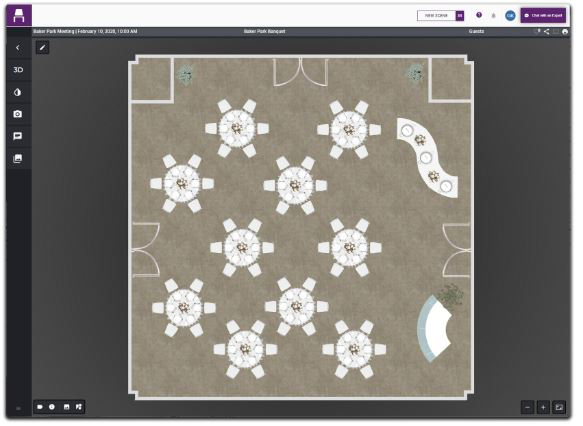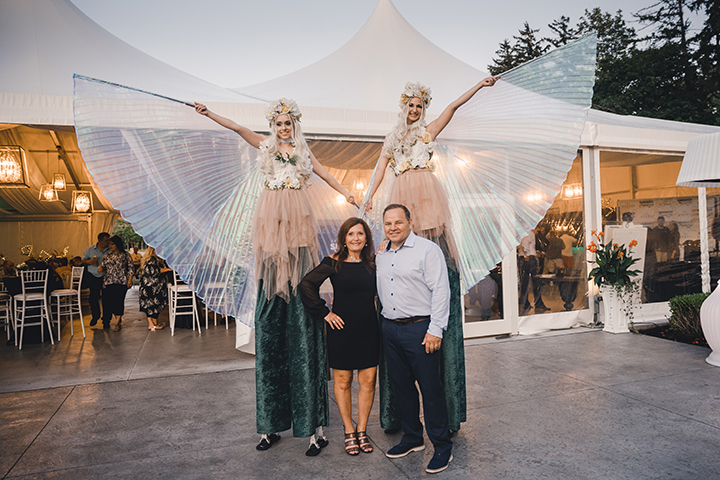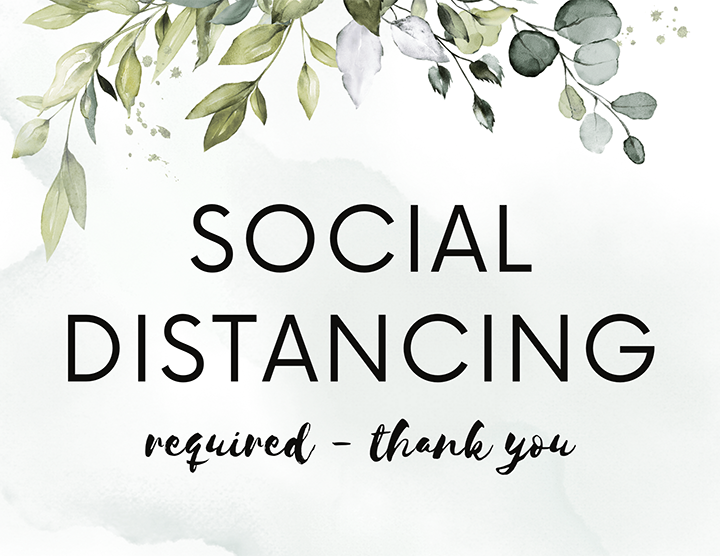Imagine a charcuterie cone, individually crafted for a single person’s consumption, offered on a hand-passed tray with a built-in sneeze guard. Or perhaps your client's wedding reception, originally slated for 150 people, is now separated into individual tents, each hosting only 50 guests. Your client and their new spouse navigate between the three socially-distanced tents so they can remain compliant with new standards while enjoying the company of all of their friends and family. These are some of the unique solutions that venues, wedding caterers and couples are coming up with to execute events while protecting the community.
Many industry professionals are depending on venues to set the standards since they are typically the hub for weddings. Without much guidance, venues and caterers have to get creative and come up with a plan for all of these “new normals”.
Capacity Restrictions
COVID-19 has spiked the popularity of micro weddings and “mini-monies,” with larger sequel weddings happening at later dates. Typically, these micros or minis are smaller events of between 10-50 people. While they have different meanings and purposes, they comply with the limited gathering orders.
Another way to prosper through capacity restrictions is to utilize otherwise “non-event” spaces. For example, outdoor patios, foyers and lounges, can be incorporated into usable square footage. Dessert stations, auxiliary bars and late night foods are great in these areas.
Social Distancing
Controlling the number of guests seated at each table and the sized tables that you use is an easy way to socially distance. Having the ability to show clients exactly how the venue will look when it's set up under these current conditions will ease their concerns. If venues don’t already use a platform or CAD system for floorplan design, now may be the time to consider one, such as getplacez.com.

Several floor planning tools have the option of setting tools to social distancing restrictions.
Configuring a traditional head table won’t be easy under the current conditions either. Even the larger harvest tables and captain’s tables won’t likely meet the social distancing standards. However, a sweetheart table for just the married couple will be both appropriate and compliant.
Dancing is a huge part of a wedding reception and for many couples, they aren’t willing to compromise on this. So to keep couples from postponing their special day to a later date, venues have come up with some creative solutions to this challenge.
“X” marks-the-spot is the solution for many venues where large x’s are taped to the dance floor at least 6’ apart. Red X’s for guests and a single white X right in the middle, reserved just for the bridal couple. With reduced guest capacities, venues actually may be able to make the dance floors larger than normal to accommodate an adequate number of X’s.
Enjoy Catersource's Rebuild & Rise Webinar "Can Buffets Survive COVID?" Learn more and register by clicking here.
Eliminating a dance floor altogether is another option, but not because there won’t be dancing. Instead of having a dance floor, guests are encouraged to dance everywhere, so long as they are still observing 6’ of separation. At first, it sounds a bit odd to not have a designated dance floor but it might actually get more people dancing. For those that have two-left feet or are shy about dancing in a crowd, it could be the opportunity they’ve been waiting for.
Some regions, including the state of Ohio, and Knox County in Tennessee, have prohibited dancing all together. Lisa Marshall, owner of Showstarters Entertainment in Rochester, New York has the perfect solution – live entertainment. “Adding stilt walkers and live roaming tables adds fun and is a special way to spice things up,” says Marshall.

In lieu of a traditional dance, where social distancing isn't available, consider hiring traveling performers and other live entertainment. Photo courtesy Avanti Mansion.
Use technology to your advantage
Live streaming events aren’t new but they may become must-haves (as opposed to luxuries) in a post-coronavirus world. For guests who are unable or uncomfortable attending a wedding, live streaming will give them an opportunity to be part of a couple’s special day. Choosing to partner with a professional who can provide this service is not the only alternative. According to Jordan Wolf co-founder of Trieye Video Marketing, “Venues may benefit by purchasing their own equipment and providing the service as an add-on.”
Signage
Whether you create your own signs, or use free ones like those at kristinbinford.com, signage will be key to reminding guests of your commitment to safety and compliance. All areas that involve social distancing warrant a sign. Entrances, restrooms, and bar areas should all have clear, visible signs reminding guests of the “6 foot” rules.

Decorative signage can go a long way to re-enforcing social distancing requirements.
Join industry groups
So far, not many venues have been allowed to host large weddings. As more do, new situations and issues will undoubtedly arise. When they do, venues will need to once again get creative and come up with new enhanced solutions. Industry-specific groups are an awesome source for ideas and collaborating. The Facebook group – “Wedding Venue Owners & Management Community” is a private group, but worth looking into.
Hang in there
If all of these new requirements have you questioning your career choice, take a deep breath and remember……this too shall pass. Large-scaled weddings (and events) as we once knew them, will resume at some point, but until then, “the creative will survive.”
For more ideas on how to Rebuild & Rise, click here



